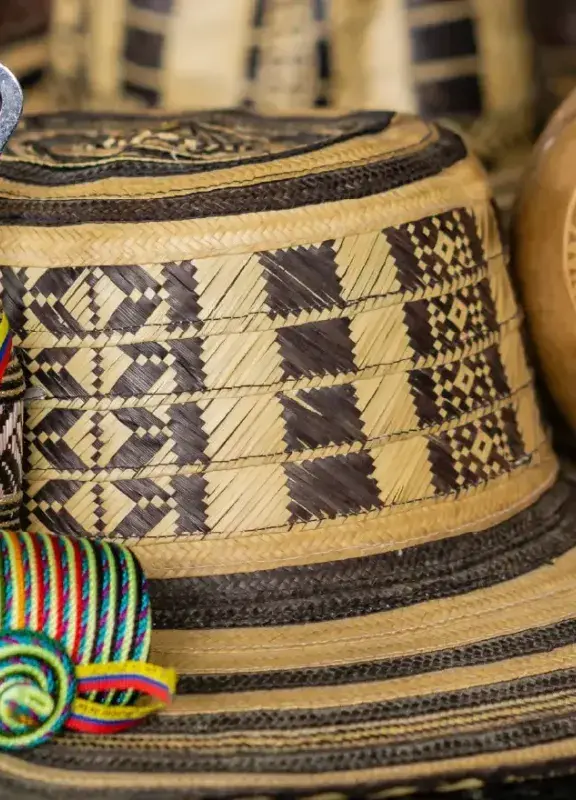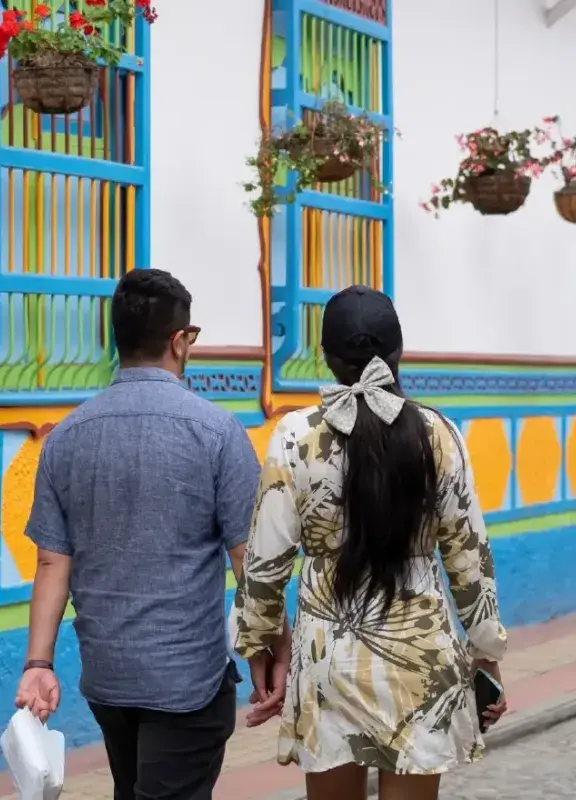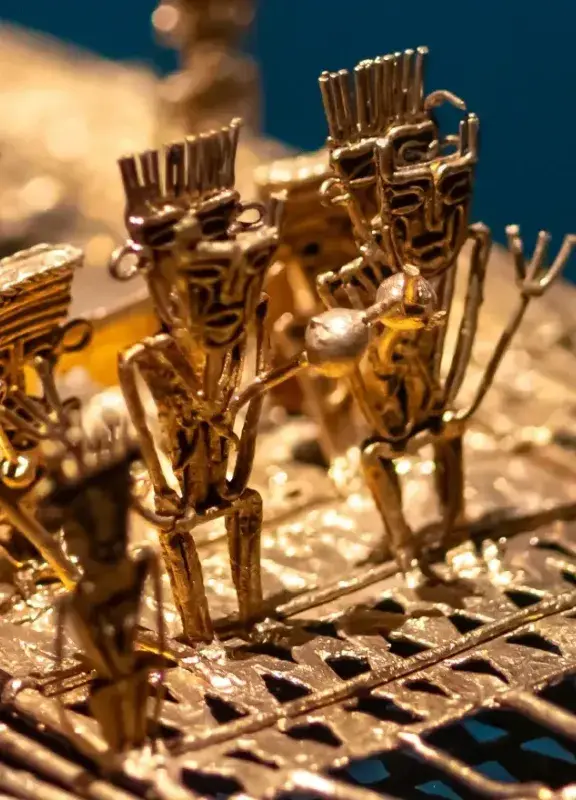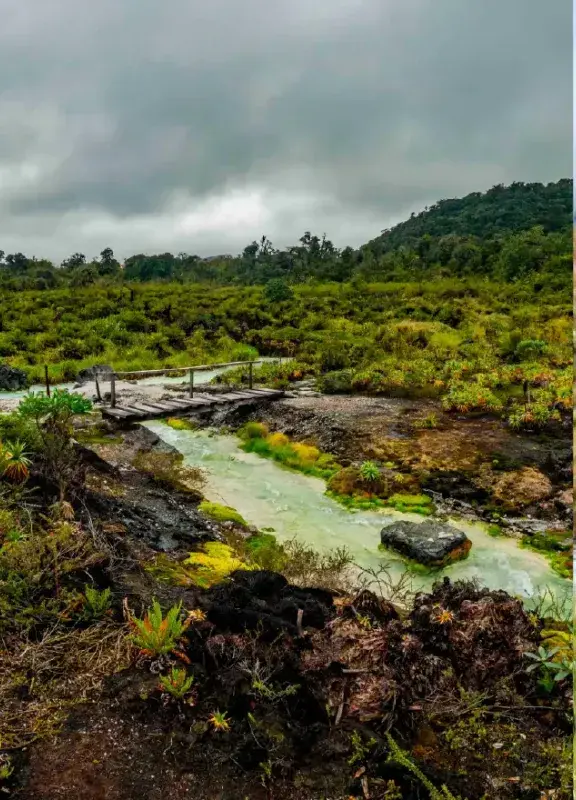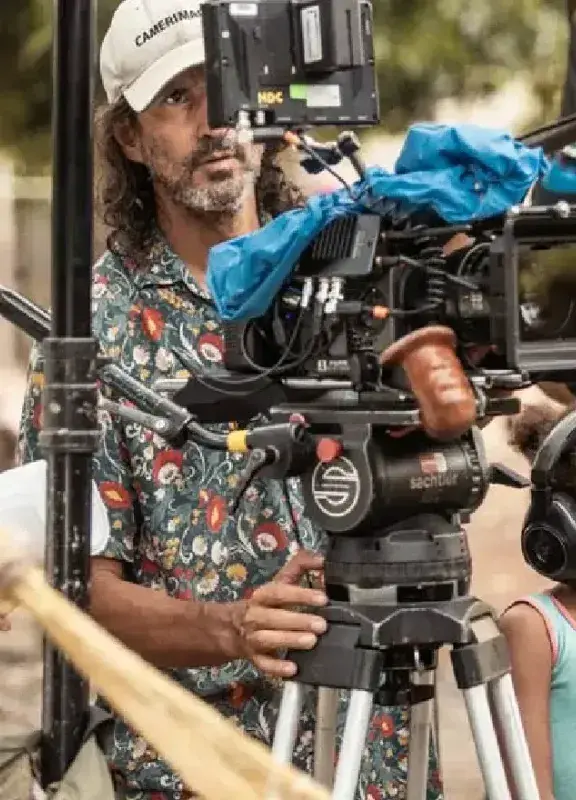Explore the secrets of rock art in Colombia, the land of beauty
Discover rock art in Colombia: a heritage carved and painted in stone that reveals the secrets of ancient cultures. Learn about its history, techniques and places to contemplate it in the country of beauty.
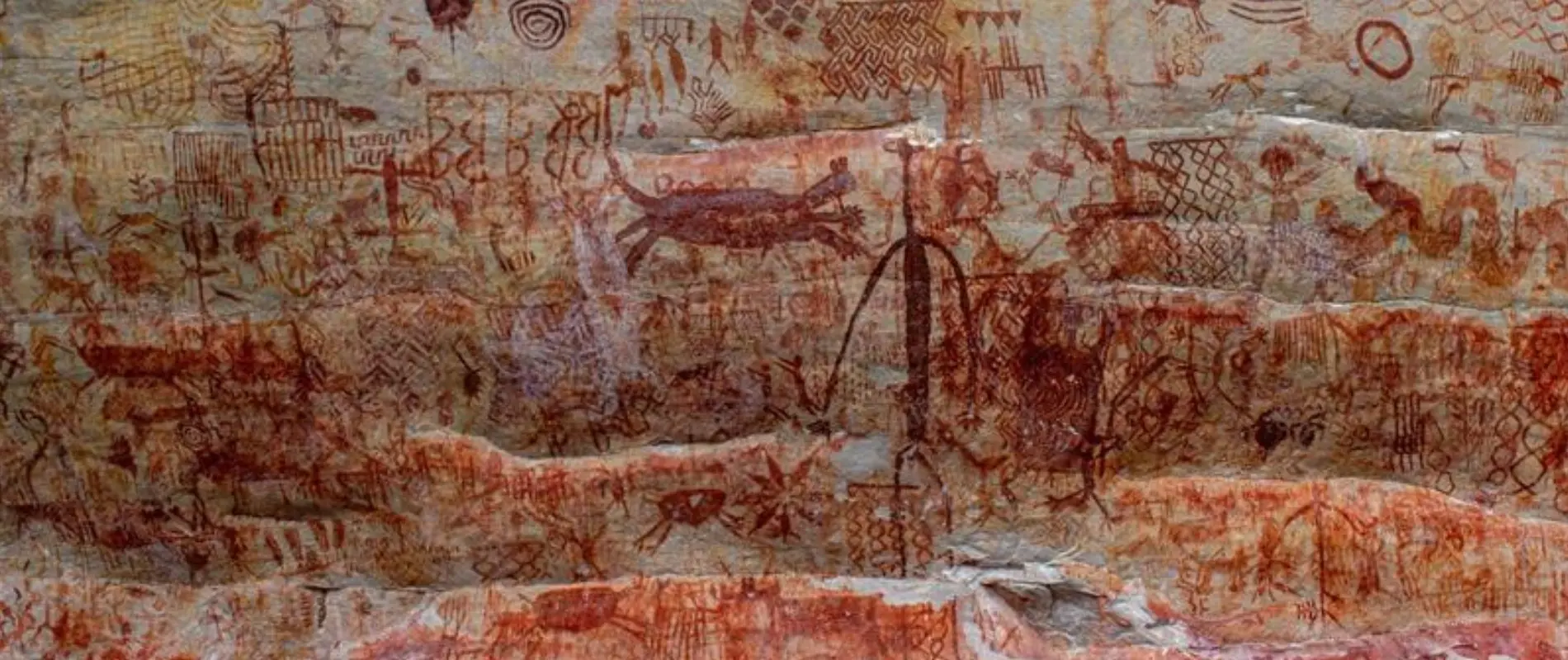
Rock art is an ancestral form of expression that has endured over the years and in Colombia, it is filled with beauty, mystery and meaning. From animal figures to enigmatic symbols yet to be deciphered, rock paintings and engravings are true windows to the past. In this article, we invite you to travel back in time and discover the secrets held by rock art in various corners of the country of beauty.
You may be interested in: Botero Museum, an unforgettable experience in Bogotá
There are different types of rock art in Colombia
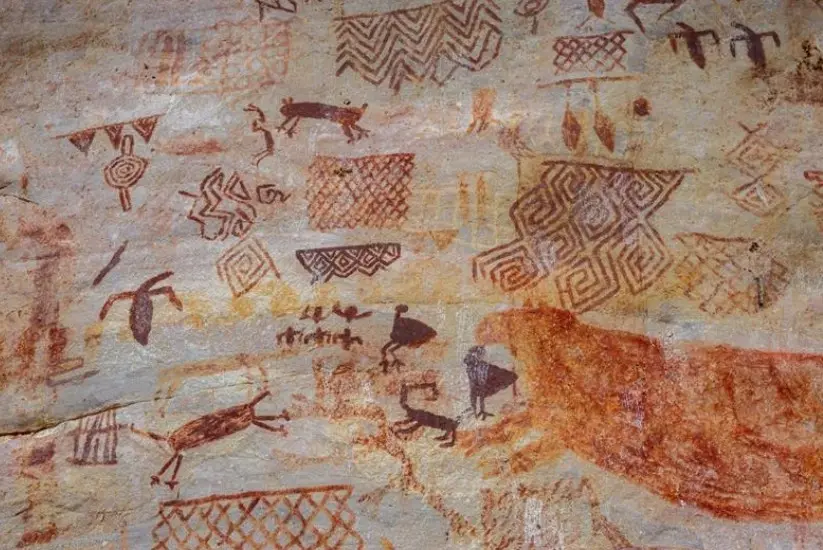
In Colombia, rock art manifests in different forms, depending on the region, the ancestral culture that created it and the message it sought to convey. Here, you can find rock paintings, made with natural pigments like iron oxide, which dye the rocks in reddish, ochre and black tones; and also rock engravings or petroglyphs, carved directly into the stone's surface. Some figures represent animals, humans, hunting scenes, or rituals, while others are geometric symbols that may have various interpretations. Among the different types of artistic manifestations are:
Pictographs: This is a type of ideographic writing that uses symbols or rock iconography to represent ideas without using words. Painted with natural pigments, these figures convey beliefs, scenes of daily life, or visions of the spiritual world of ancient peoples.
Petroglyphs: These are engravings made on stone, created by scraping or carving its surface using techniques such as incision, carving, or abrasion. An example is the petroglyphs of the San Agustín Archaeological Park in Huila, where figures carved in stone by pre-Hispanic cultures are found.
You may be interested in: This was the pre-Columbian era in Colombia
Each painting was created with different techniques and materials
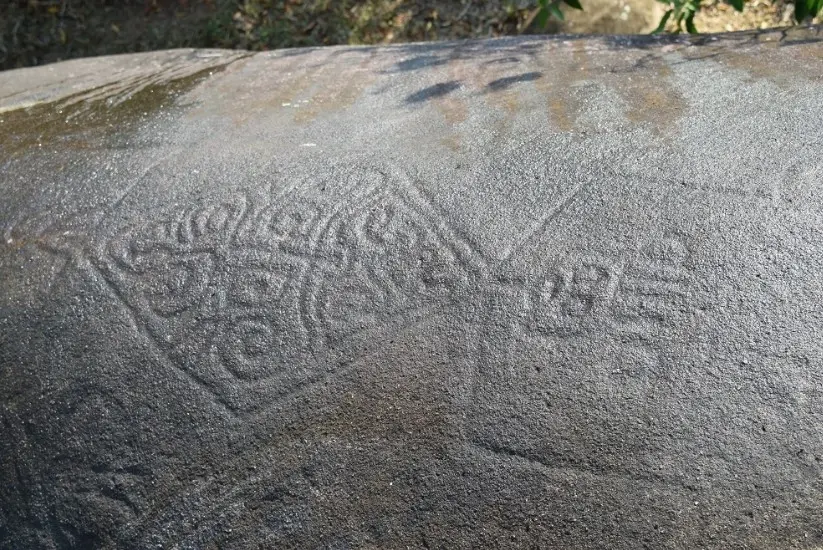
For the creation of rock paintings, natural pigments such as iron oxides and charcoal were used, mixed with animal fat, water, or plant resins. These pigments were applied directly to the stone surface and were painted with fingers, rudimentary brushes made from branches, or even by blowing the mixture through hollow reeds. In the case of engravings or petroglyphs, techniques such as incision, carving, or abrasion were used. These techniques varied depending on the region, the available materials and the symbolic or ritual intention of the created art.
You may be interested in: Modern art in Colombia: Artists and museums making waves worldwide
The paintings hold special meanings
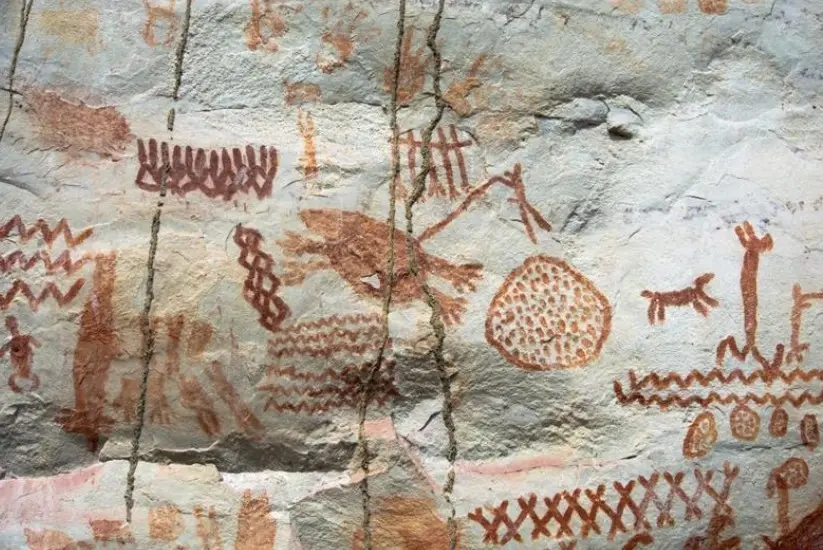
Rock art in Colombia holds deep cultural and historical significance. These graphic manifestations, created by pre-Hispanic communities, were forms of communication, symbolic expression and connection with the spiritual and natural world. Through human figures, animals, geometric symbols, pre-Columbian painting techniques and everyday scenes, ancient inhabitants represented their beliefs, rituals, visions of the cosmos and their relationship with the environment. Today, this heritage holds invaluable value as a testament to the past and a source of identity for current indigenous communities.
Five places with rock art in Colombia that reveal the legacy of ancestral cultures
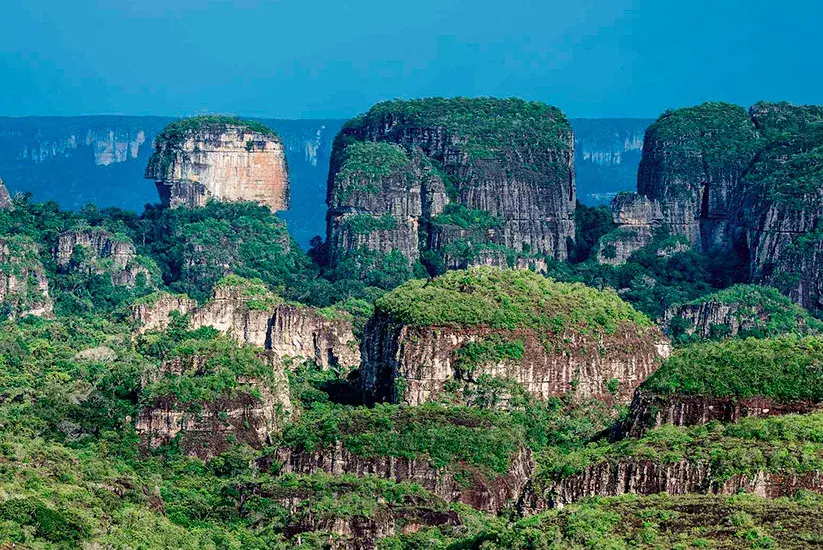
The country of beauty holds within its geography a testament to ancient civilizations: rock art. Carved or painted on stone, these graphic expressions reveal spiritual, everyday and symbolic aspects of indigenous peoples. Below, we present five places in Colombia where this valuable archaeological legacy has been documented.
1. Chiribiquete National Natural Park: The Serranía de Chiribiquete hosts one of the largest concentrations of rock art in the country. The Chiribiquete rock art records hundreds of human figures, animals and geometric shapes, associated with rituals and mythologies of indigenous peoples.
2. San Jacinto and San Juan Nepomuceno: These municipalities in the Bolívar department are home to a series of archaeological treasures engraved in rock, also known as petroglyphs, created by the indigenous Zenú culture. Pottery and other objects dating back to around 4000 BCE have also been found, including ceramic pieces considered among the oldest in the Americas.
3. Facatativá Archaeological Park: Also known as Piedras de Tunja, this site contains over 60 murals with natural pigments. The representations, attributed to the Muisca people, depict ritual scenes, animals, human figures and symbols that may be over 2000 years old.
4. Los Santos and El Cañón del Chicamocha: These areas concentrate significant archaeological wealth with remnants of the Guane culture. Among them are rock paintings with solar and animal motifs, considered sacred elements in their worldview.
5. Serranía de la Lindosa: This place is recognized for its impressive rocky landscapes and valuable rock art deposits thousands of years old. The pre-Columbian paintings of the Serranía de la Lindosa depict hunting scenes, animals and human figures, revealing the cultural richness of ancient civilizations.
Related articles:
 Welcome, you are in
Welcome, you are in 



